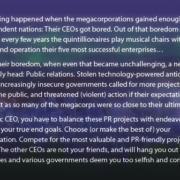Learning from the mistakes of Construction Fever – part 2
In the last post, I wrote about developing a theme for the game by giving the game a reason. In this post, I want to talk about another feedback I received, which is how to keep players engaged with the game. Some of the players who demoed the game during the Kickstarter campaign told me that the game was really fun for the first few rounds, but they got bored towards the end.
Keeping the players engaged
When I asked more in-depth questions to those players who gave me this feedback, I learned that they enjoyed the game and that they thought the game mechanics were unique. The first few rounds were fun, but they thought the game felt a bit repetitive, and that it was difficult for them to see the paths to victory. The second part was particularly interesting that, although the game is a pretty straight forward bidding game, some players need short objectives they can achieve during the game.
This was another interesting observation for me. Until now I thought in-game objectives to be merely a bonus point to achieve, but I realized that they act well as a guide to the overall goal of the game. It also gives players a feel of achievement which amplifies their enjoyment and as well as motivation to keep on playing the game.
So what I did was I created a personal mission for each CEO. Each player chooses or is randomly dealt a CEO at the beginning of the game. By completing the personal mission, that player will receive a nominal amount of victory points.

His personal goal is Maximizing Profit
He will earn bonus reputation if he gains 7 or more credits in a single round.
Additionally, I created a special one-time ability for each corporation. Each player chooses or is randomly dealt a corporation at the beginning of the game, much like CEO. I crafted the background story so that it wasn’t awkward that the CEO and the corporation were swapping every game. The goal here was to create a slight deviation to the game’s rhythm (tempo) without affecting the game’s tension too much. Making the ability too power can easily break the game.

The result was pretty favorable. While I am still working on the fine tuning of abilities strength, but testplayers responded that the rounds felt much more fluid and dynamic. Again, another lessons learned!
What are some of your favorite games with variable player powers?




